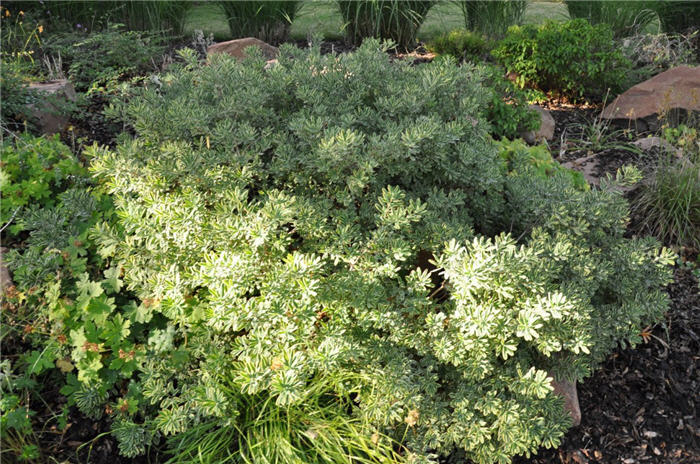| Botanical Name: Daphne burkwoodii 'Carol Mackie' | |
| Common Name: Carol Mackie Daphne |

-
Anatomy
-
Culture
-
Design
Plant Type
Broadleaf Evergreen, Shrub
Height Range
1-3'
Flower Color
Pink, White
Flower Season
Spring
Leaf Color
Green, Grey Green, Yellow, Variegated
Bark Color
Brown
Fruit Color
Red
Fruit Season
Summer, Fall
Sun
Half, Shade
Water
Medium, Extra in Summer
Growth Rate
Moderate
Soil Type
Clay, Loam
Soil Condition
Average, Rich, Well-drained, Moist
Soil pH
Acid, Neutral
Adverse Factors
n/a
Design Styles
English Cottage, Formal, Japanese, Woodland
Accenting Features
Fragrance, Showy Flowers, Unusual Foliage
Seasonal Interest
Winter, Spring
Location Uses
Entry, Perennial Border, Shrub Border, Foundation, Patio, Raised Planter, Walls / Fences
Special Uses
Small Spaces
Attracts Wildlife
n/a
Information by: Stephanie Duer
Photographer:
Photographer:
-
Description
-
Notes
Carol Mackie daphne is an evergreen to semi-evergreen shrub that reaches 2 to 3 feet tall and 3 to 4 feet wide, with a rounded, mounded habit, dense and twiggy. Oblong grey-green leaves have a creamy white to yellow margin that gives the shrub an airy quality. Pale pink to white flowers bloom in May and are have a lovely clove-like scent. Small berries appear in late summer and fall; they are poisonous to mammals. It looks great as a foundation plant, in a rock garden, or a shrub border. A well-grown 'Carol Mackie' is a beautiful shrub.
Best grown in rich, sandy-humusy, well-drained soils with a neutral pH in part shade. Consider raised plantings in areas of heavy clay soils to insure good drainage. Benefits from a summer mulch or ground cover which will help keep roots cool (sweet woodruff or ajuga are particularly nice). Best sited in a location protected from winter winds. Daphnes are often slow to establish and are best left undisturbed once planted. Do not shear, but prune selectively if necessary. All parts of the plant are poisonous.